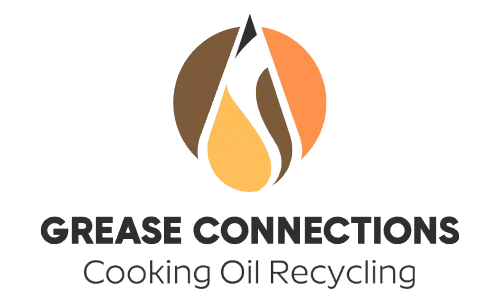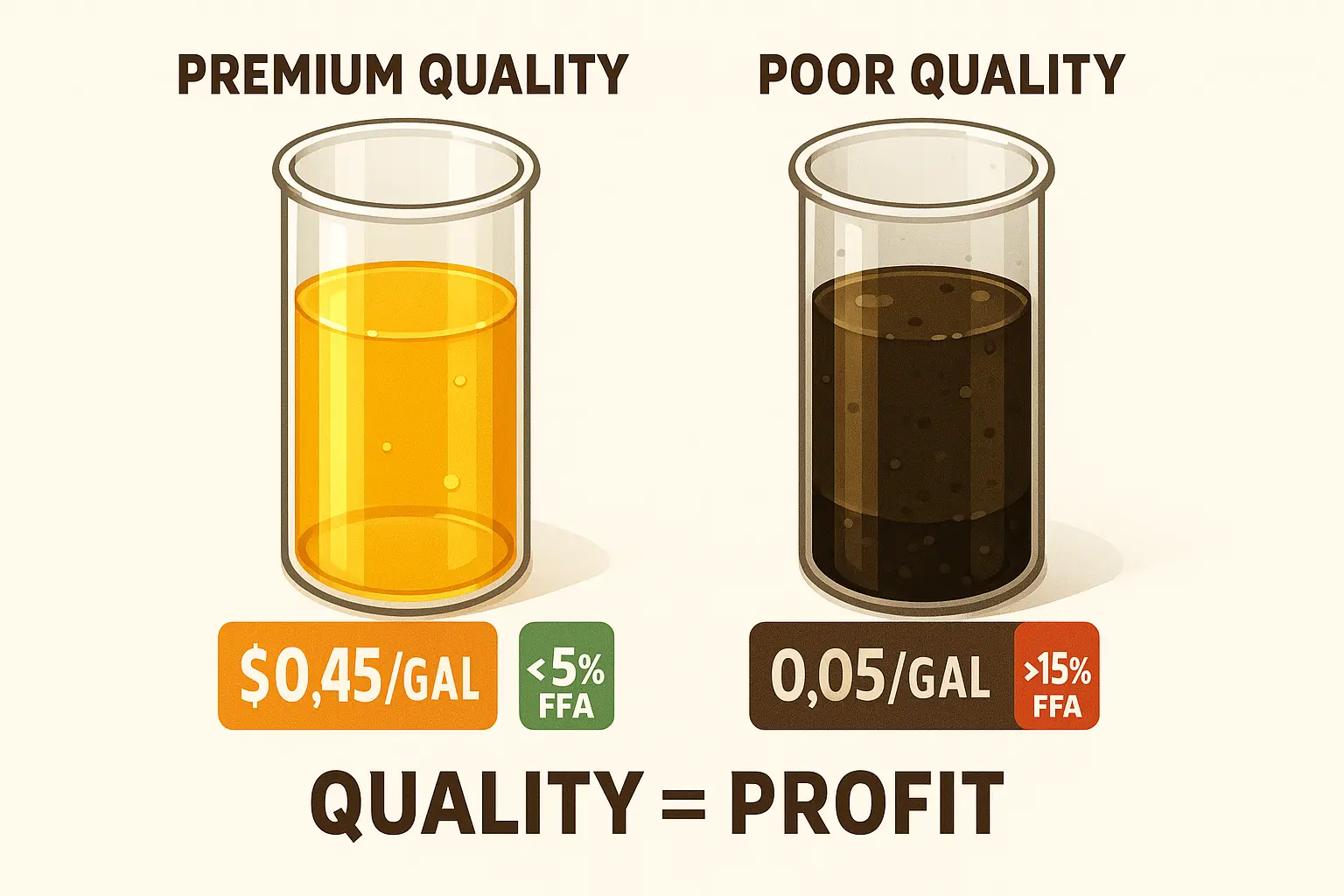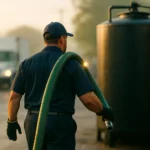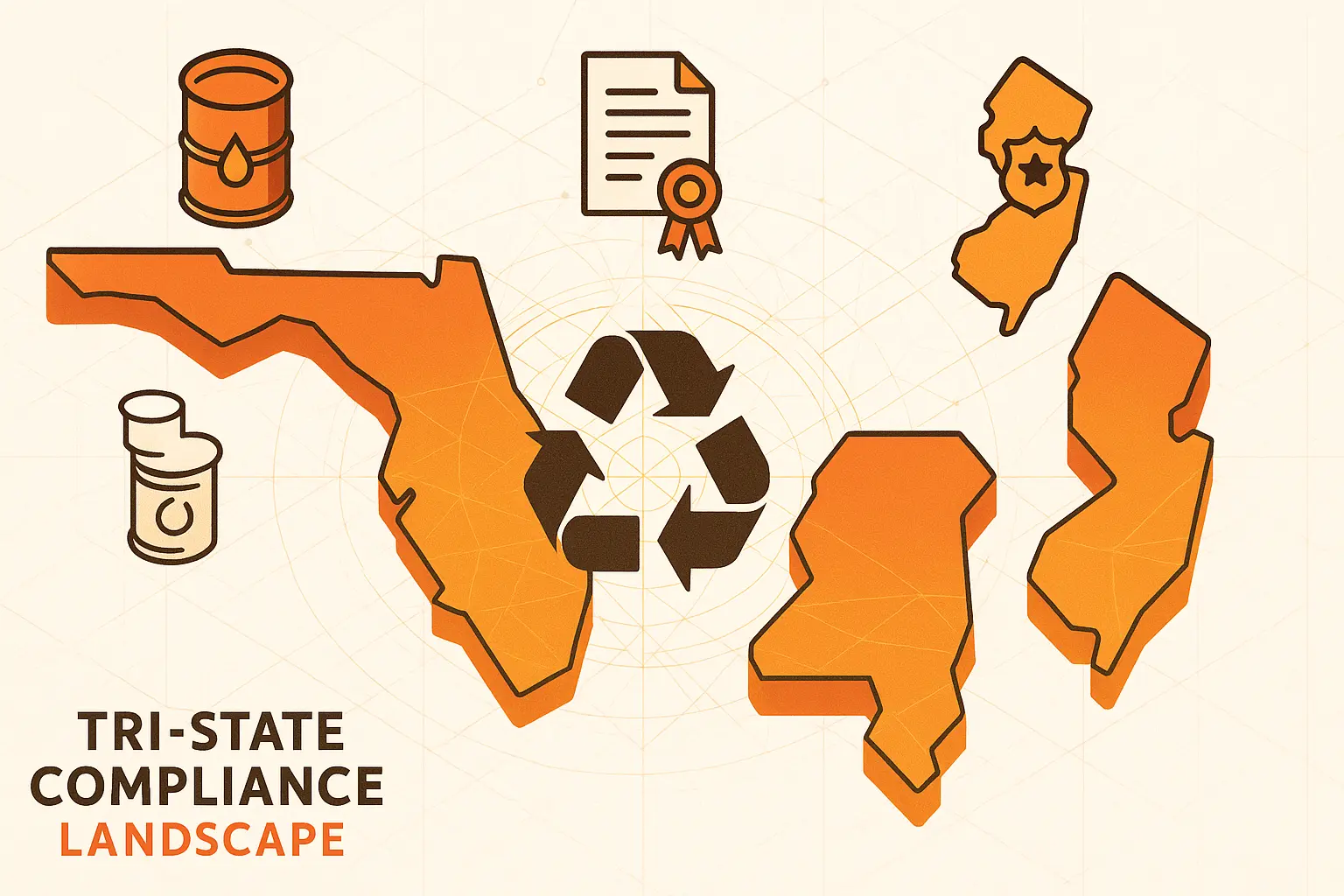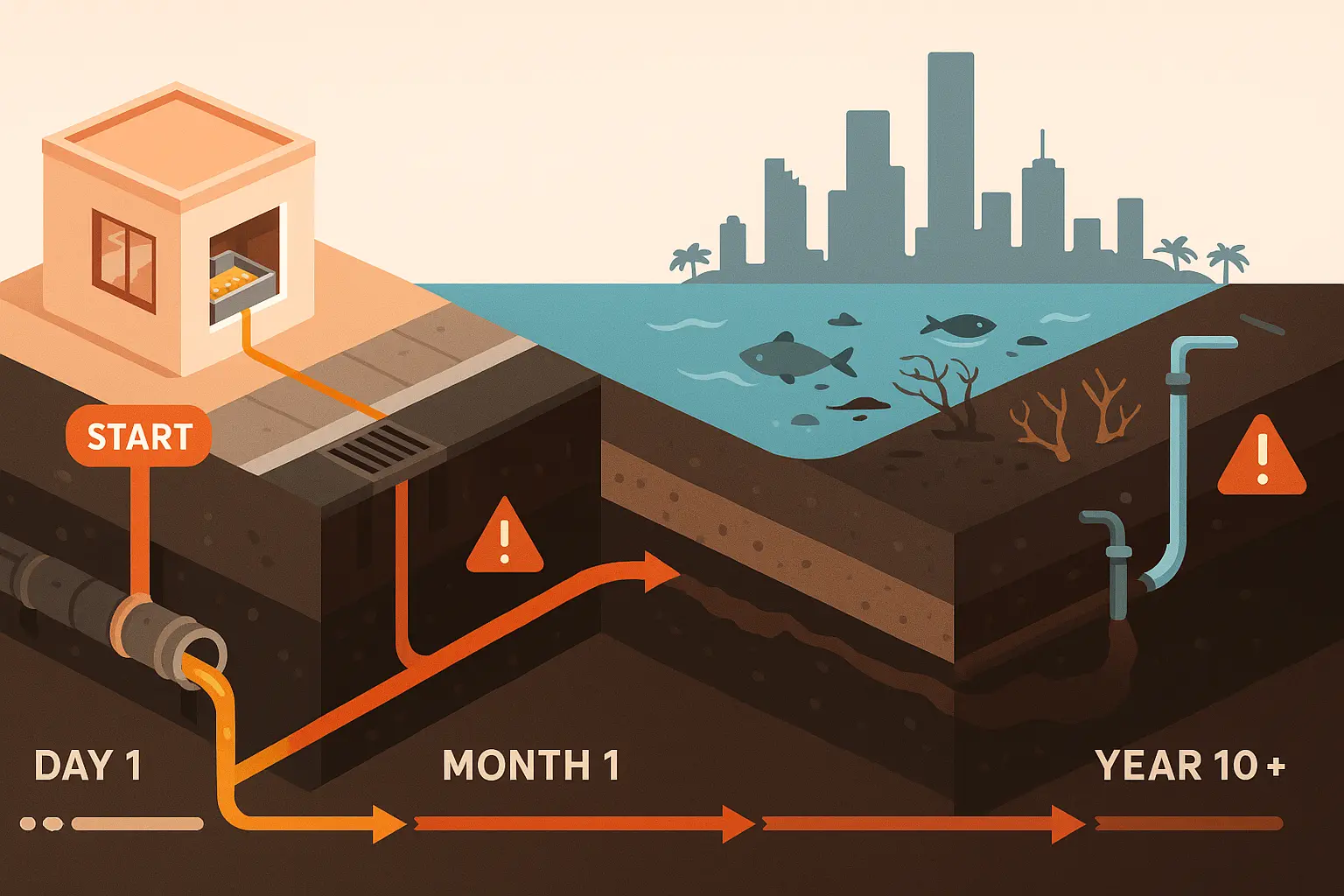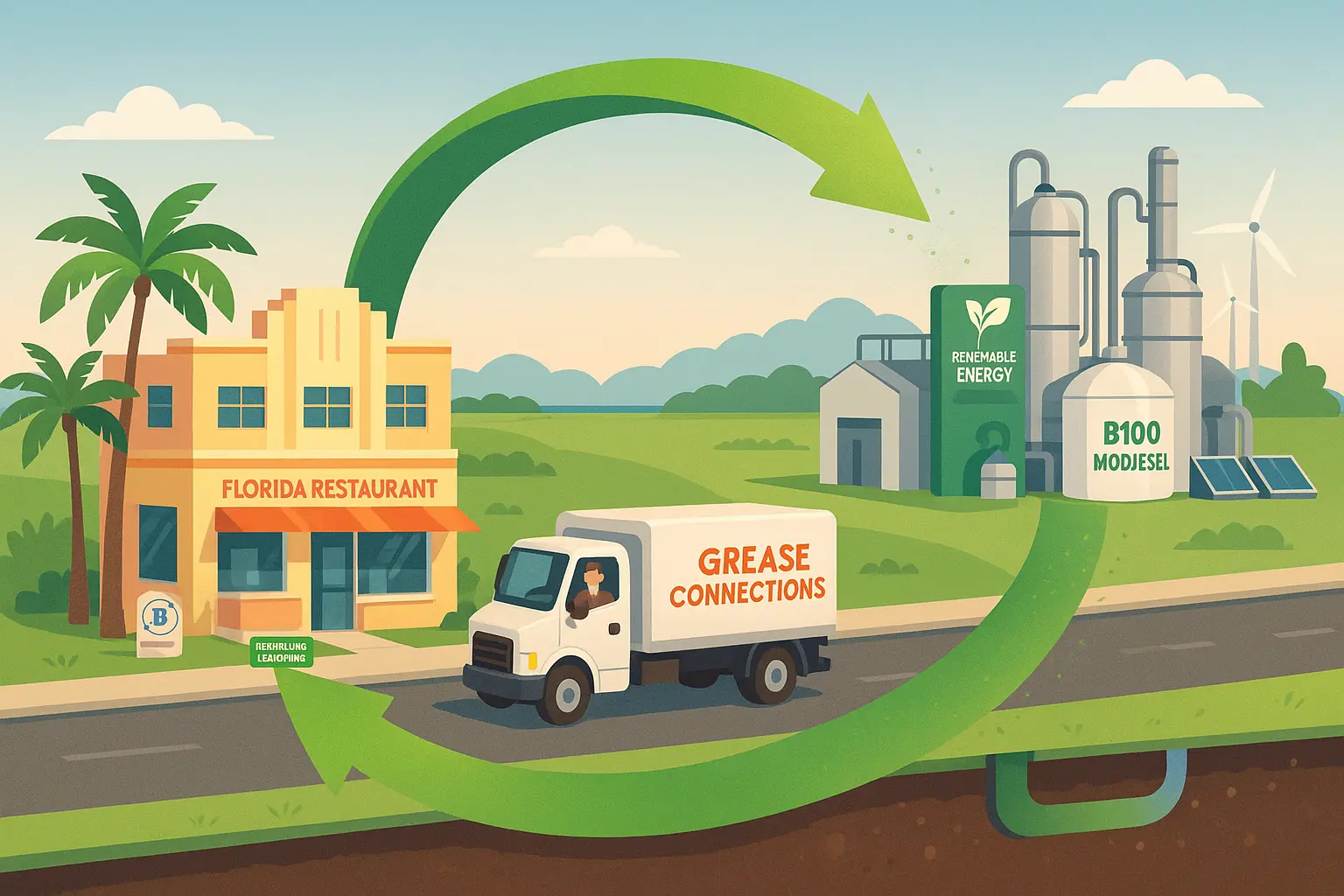Table of Contents
Why track every fryer oil rebate
Quick answer: Each missed pickup throws away cash priced near $1,200 per metric ton today.
UCO on the US Gulf Coast has traded as high as $1 200/t in 2025, making it a commodity you can bank not trash. USDA market sheets show yellow grease itself moves between 21 ¢ and 41 ¢/lb, a spread wide enough to double or halve your check. When restaurants record every gallon and schedule on time service, that money lands reliably in their P&L instead of leaking out a back gate.
How does oil quality shape your price
Quick answer: Keep FFA under 5 % and MIU below 2 % to hit the top tier.
Buyers penalize loads that need extra refining. Industry guidance pegs premium UCO at ≤ 5 % FFA and ≤ 2 % MIU; every point above that is a price haircut. Grease Connections’ sealed, hurricane rated tanks plus 24/7 level sensors stop rainwater and breading crumbs before they slash your grade.
| Quality Band | Lab Spec | Rebate Outlook* |
|---|---|---|
| Premium | < 5 % FFA, < 2 % MIU | Upper USDA range (≈ 35–41 ¢/lb) |
| Standard | 5–15 % FFA, 2–5 % MIU | Mid range |
| Discount | > 15 % FFA or > 5 % MIU | Downgraded to brown grease value |
Does your volume influence payout
Quick answer: Bigger, steadier loads cut route costs and unlock volume bonuses.
ATRI’s 2024 cost study puts driver wages alone at $0.779 per mile. Filling a 4 000 gallon tanker in six stops instead of twenty spreads that cost, letting collectors share the savings; cross the roughly 100 gallon per month mark and rebates usually climb another 2 to 8 ¢/gal. Grease Connections supplies free extra totes during busy seasons so multi unit groups can combine oil and jump tiers faster.
Why do miles matter
Quick answer: Every extra 30 miles can shave 10–15 ¢/gal from your check.
Dry van spot rates averaged $2.06/mi and contract rates $2.35/mi in June 2025. A café 6 miles from our Port of Miami hub keeps nearly the full market price, while a Key West bistro 160 miles away eats freight that can halve margins. Route optimization software clusters nearby restaurants so your oil and payout stay high.
| One Way Miles | Added Haul Cost* | Typical Rebate Impact |
|---|---|---|
| < 30 mi | Minimal | Full market rate |
| 30–60 mi | + $0.05–0.10/gal | Moderate discount |
| > 60 mi | Distance based quote | Larger discount unless high volume |
How does your collection partner affect earnings
Quick answer: Transparent pricing and a spill fine guarantee protect every dollar.
Reputable firms peg payouts to benchmarks like the Jacobsen index, issue certified weight tickets, and publish MIU/FFA scores. Grease Connections goes further: our “Missed Pickup Paid” pledge covers any city citation if we’re late no small print. Security matters too; grease thieves siphon $75 million in oil each year, so our tamper proof lids and live alert sensors stop losses before they start.
What quick wins raise your rebate today
Quick answer: Skim nightly, close lids and pick up at 70–80 % full.
Each crumb left in the vat oxidizes oil and drives FFA up; rainwater from an open hatch spikes MIU past the 2 % cap. Level sensors text you and us when tanks hit 75 %, letting you batch pickups for the volume bonus without risking overflow fees. Review monthly statements against USDA yellow grease averages; if your rate drifts far below the 21–41 ¢/lb range, it’s time to renegotiate.
Need a transparent grease collection service that pays top rates
Quick answer: Grease Connections ties your price to live markets, adds clean oil and volume rewards, and guarantees zero spill fines.
Demand for waste based feedstocks keeps climbing with new biodiesel and SAF mandates, and our April 2025 clients averaged $0.28 base + $0.07 quality + $0.03 volume per gallon. One 15 minute sign up secures weekly pickups across FL, GA and NJ backed by dashboards your accountant will love.
